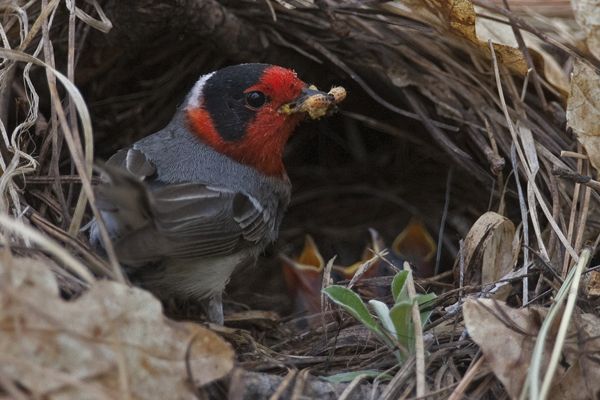
Why Elk Are Robbing Birds

Sonya Auer, of the Department of Environmental Conservation at the University of Massachusetts, Amherst, recently won the Elton Prize, from the British Ecological Society for her research and writing. She contributed this article to Live Science’s Expert Voices: Op-Ed & Insights.
Plants and animals in a given area form an ecological system of interacting species. Impacts on one, or just a few, species can ripple throughout the system and have indirect effects on other species within a larger community.
Many plants and animals are sensitive to shifts in temperature and precipitation and subsequently relocate to more suitable climates or reschedule their seasonal activities.
One of the most challenging tasks facing ecologists today is determining how species are responding to rapid changes in climate, and the consequences. In the high-elevation canyons along the southern edge of the Colorado Plateau in central Arizona, I worked with my colleague Thomas Martin of the U.S. Geological Survey to study how more than two decades of changing winter temperatures have hurt spring breeding success for birds. This harm results not just from changing temperature, but stem indirectly from climate impacts on elk, small predators and even the forest the birds inhabit.
As winter temperatures on the plateau increase, more precipitation is falling as rain rather than snow. Less snow means it’s easier for big animals like elk to hang around and find food, so they are now remaining at these high elevation sites throughout winter rather than migrating to lower elevations like they have done historically. But, elk opting to overwinter in the canyons is not boding well for the local plants and birds. [Warming Planet Pushing Species Out of Habitats Quicker Than Expected]
Elk eat plants, and they especially like the tender new shoots of trees like maple and locust compared with conifers, which have chemical defenses against herbivory. So, when elk hang around in the canyons all year, it’s harder for young saplings of these deciduous trees to grow large enough to then produce their own seedlings. Over time, this has led to big changes in the forest. Older maples and locusts are dying out and are not being replaced by the next generation, so they are becoming less and less abundant in the forest in these canyons.
What, then, do these effects of winter temperatures on snowfall and elk and plants mean for bird species like the Red-faced Warbler?
Sign up for the Live Science daily newsletter now
Get the world’s most fascinating discoveries delivered straight to your inbox.
Each spring, Red-faced Warblers, along with two other related species — the Orange-crowned Warbler and Virginia’s Warbler — build cupped nests of grass tucked into the ground at the base of trees. There, they incubate their eggs and raise their young until they grow big enough to leave the nest.
In the past, the three warbler species did not choose the same kind of nest sites. Instead, each selected patches dominated by different tree species. Orange-crowned Warblers preferred nesting in clumps of maples, Virginia’s Warblers liked locusts, and Red-faced Warblers nested under small fir trees. But, now that maples and locusts are declining, Orange-crowned and Virginia’s Warblers have fewer preferred nest sites to choose from and are increasingly forced to nest in sites similar to those of the Red-faced Warbler.
So, why does this matter? Well, nest-site choices have consequences for nest survival and subsequent population numbers. When the birds divvied up their use of the different nest sites in the past, predation on their eggs and nestlings by squirrels and mice was lower. But, now that the forest has changed and the birds are nesting in similar sites, their nests are being detected more often by predators, which means fewer nests are fledging young. Fewer young can then lead to population declines.
It is not entirely clear why nest predation increases when nest sites become more similar over time. The forest is changing, but there is no indication that predator numbers are going up, so that’s an unlikely reason. It makes sense that it might have something to do with predator searching behavior: Focusing on finding just one type of nest might be easier than learning to recognize, and search for, lots of different nest types in the same way that finding Waldo is easier when he wears the same outfit rather than a different colored shirt and pants in each new picture.
What we do know is that long-term increases in winter temperature are linked, via elk migratory behavior and tree regeneration, to the nesting success of birds in the spring — and that points to the complexities through which climate change can have compounding effects on natural systems. Understanding those complexities and the population consequences of climate change are critical for trying to come up with means to minimize the impacts on our natural world. [Warmer Spring Brings Troubling Consequences: Op-Ed]
The views expressed are those of the author and do not necessarily reflect the views of the publisher.












